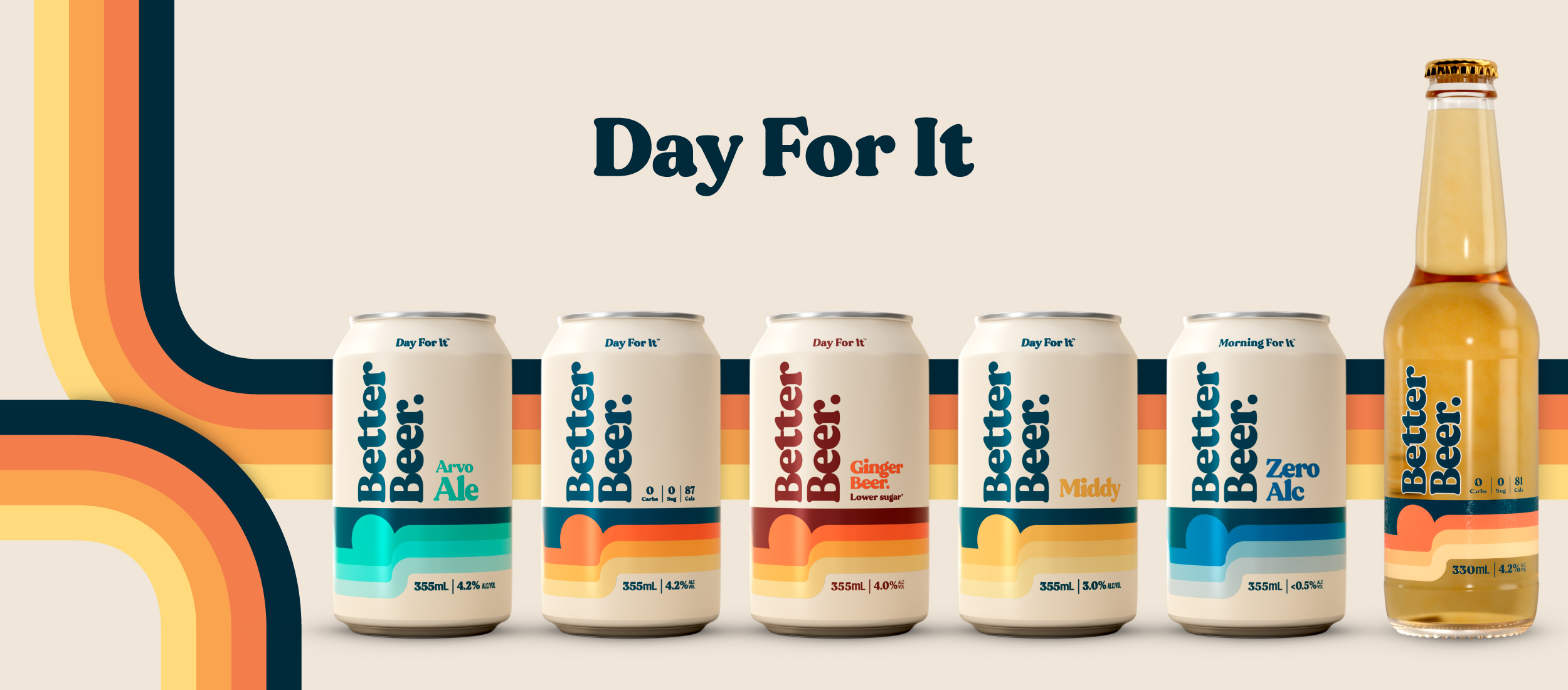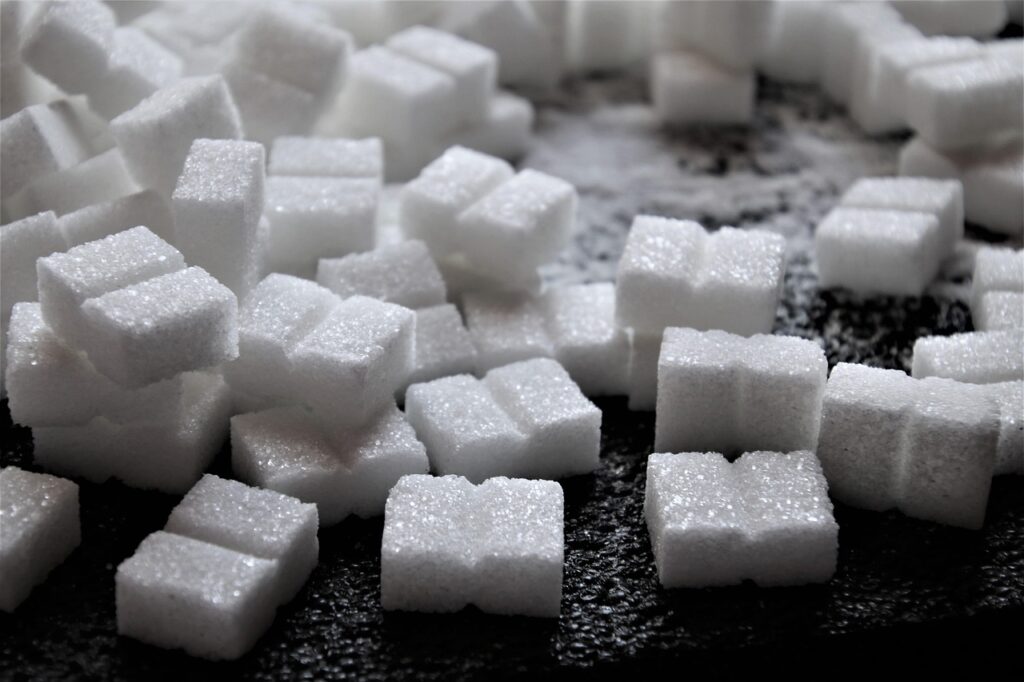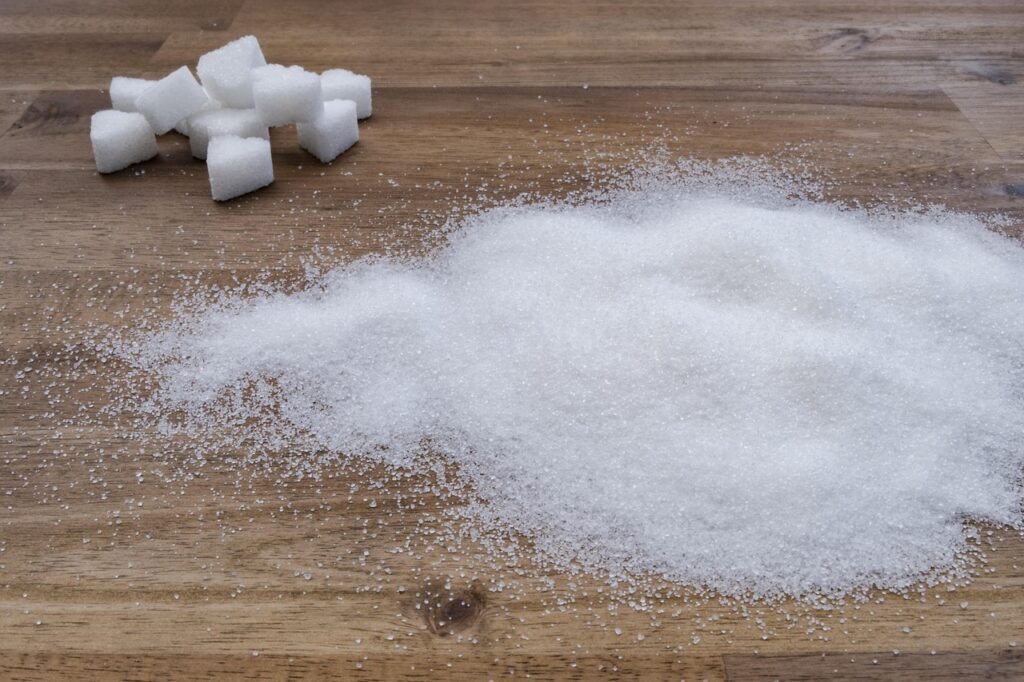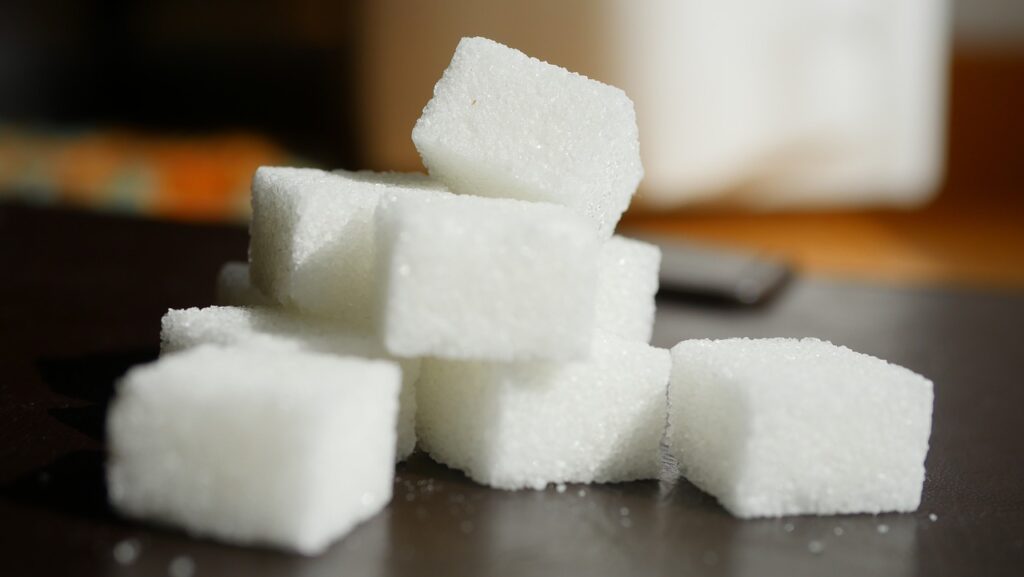Many of us can relate to having a sweet tooth, often indulging in our favorite treats without a second thought. However, the amount of added sugar most Americans consume significantly exceeds recommended health guidelines, leading to a cascade of potential health issues. According to the American Heart Association (AHA), the average adult in the U.S. consumes approximately 17 teaspoons of added sugar daily, which is more than two to three times the recommended limits for men and women, respectively.
This overconsumption is a serious concern, as high amounts of sugar have been linked to an increased risk of heart disease, obesity, type 2 diabetes, certain cancers, depression, and liver disease. Beyond these long-term risks, a sugar-heavy diet can leave you feeling sluggish, irritable, and generally unwell. It’s no wonder that millions are searching for “what happens when you stop eating sugar for 30 days,” eager to understand the tangible benefits of a sugar reset.
Embarking on a 30-day no-sugar challenge is more than just a passing trend; it’s a science-backed journey toward a healthier body and mind. This in-depth look will explore the remarkable week-by-week changes your body undergoes when you cut out added sugars, from the initial cravings to profound metabolic shifts, clearer skin, stable energy, and significant improvements in overall well-being.

1. **Understanding Added vs. Natural Sugars**When we talk about “stopping sugar,” it’s crucial to clarify what kind of sugar we mean. Most people are referring to *added sugars* — the refined or concentrated sugars that are mixed into countless foods and drinks. These include common culprits like table sugar, high-fructose corn syrup, various syrups, honey, jaggery, and cane sugar. These differ significantly from *natural sugars* found in whole fruits, vegetables, and milk, which come packaged with beneficial fiber, vitamins, and protein.
Free sugars encompass all added sugars, along with fruit juices and syrups, which, despite their natural origin, lack the fiber of whole fruits and can still contribute to rapid blood sugar spikes. Natural sugars, on the other hand, are inherently present in whole fruits, vegetables, and dairy products. The World Health Organization (WHO) confirms that the sugars in whole fruit are not considered part of “free sugar,” highlighting the distinction.
The American Heart Association (AHA) advises women to keep added sugars under 25 grams per day (about 6 teaspoons), and men under 36 grams per day (about 9 teaspoons). The WHO suggests limiting free sugars to less than 10% of daily calories, ideally even less than 5% for enhanced dental benefits. These guidelines underscore that the focus of a sugar reset isn’t on banning nutritious fruits but on consciously avoiding the free and added sugars that significantly drive disease risk.
Read more about: Avoid These 12 Barbecue Blunders: Your Ultimate Guide to Mastering the Grill for Edible Success

2. **The Hidden Sugar Problem**One of the biggest obstacles to reducing sugar intake is its pervasive presence in foods we often perceive as healthy. Most people drastically underestimate their actual sugar consumption because added sugars are masterfully hidden under a multitude of names and lurk in unexpected places. Flavored yogurts, energy bars, ketchup, breakfast cereals, and even seemingly innocent “detox juices” can be surprisingly potent sugar bombs.
Food labels, unfortunately, don’t always make it easy to identify these stealth sugars. Manufacturers use dozens of different names for sugar, such as maltose, dextrose, brown rice syrup, and agave nectar, making it challenging for consumers to make informed choices. While the FDA has required “Added Sugars” to be listed on nutrition labels since 2016, along with a %DV (daily value) out of 50 grams per day, the sheer variety of sugar aliases remains a problem.
A practical tip for spotting hidden sugars is to scrutinize the ingredient list. If sugar, or any of its 50+ alternative names, appears within the first three ingredients, the product is highly likely to be sugar-heavy. This awareness empowers consumers to take control, knowing that understanding the difference between added and natural sugar and being able to identify hidden sugars is the first crucial step toward a successful sugar reset.
Read more about: Unlock Your Freezer’s Potential: 14 Simple Ways Functional Frozen Foods Can Supercharge Your Health and Simplify Your Life
3. **Week 1: Navigating Cravings and Initial Adjustments**The first week of cutting out added sugar is often the most challenging, commonly referred to as the “detox phase.” Your brain and taste buds have grown accustomed to the powerful sugar highs and subsequent crashes, creating a cycle that’s hard to break. When you suddenly remove this familiar stimulant, your body and mind react, leading to noticeable sugar withdrawal symptoms.
During these initial 7 days, it’s common to experience headaches, irritability, mood swings, and a pervasive sense of fatigue. These symptoms are real, as Harvard Health explains, because sugar activates dopamine, much like an addictive drug, and removing it can trigger a withdrawal response. You’ll likely also find yourself battling intense cravings for sodas, candies, and all your favorite desserts, as your system protests the sudden deprivation.
However, even in this challenging first week, positive changes begin to emerge. Replacing sugary drinks with water or herbal tea significantly improves hydration. A controlled study cited by NIH found that children who cut added sugars for just 9 days showed improved insulin sensitivity and reduced triglycerides, demonstrating that these early metabolic adjustments happen rapidly. This early shift, though subtle, lays the groundwork for more significant transformations.
4. **Reduced Inflammation**For many, chronic inflammation is an underlying issue that sugar exacerbates. P.S. Wilson, the Chief of Wellness for Private Home Care & Corporate Wellness, experienced this firsthand. Despite eating relatively healthy, he struggled with severe inflammation, manifesting as swollen wrists and persistent pain in his chest and back. He hadn’t realized how much sugar he was consuming or how addictive it had become until he made the decision to eliminate it.
Wilson’s experience highlights the insidious nature of sugar’s impact. After cutting out sugar, combined with fasting and careful monitoring of his eating patterns, he witnessed significant changes. The inflammation and pain that had plagued him disappeared, and he felt his body was finally healing from within. This personal account serves as a powerful reminder of how dietary choices, particularly regarding sugar, can profoundly influence the body’s inflammatory response and overall health.
Sugar is known to fuel chronic inflammation, a factor implicated in numerous health conditions. By removing this dietary trigger, the body’s inflammatory markers can decrease, leading to a reduction in symptoms like joint pain and swelling. Wilson’s case underscores that for those grappling with inflammation, a sugar-free approach can offer substantial relief and contribute to a feeling of internal healing and well-being.
Read more about: Beyond the Cough: 14 Critical Lung Infection Warning Signs You Should Never Ignore, Including Unexpected Clues on Your Fingernails

5. **Managing Intense Cravings**One of the most frequently reported challenges when embarking on a sugar-free journey is the intensity of cravings. Sugar is highly addictive, stimulating dopamine release and creating a cycle of pleasure and dependency. P.S. Wilson candidly admitted to facing this hurdle during his initial days of cutting sugar, describing himself as feeling irritable and experiencing significant withdrawal symptoms. He noted, “it was a challenge.”
However, Wilson’s experience also offers a beacon of hope and a testament to the body’s adaptability. By adhering to a disciplined routine, he found that his mood eventually evened out, and he began to feel much better. His taste buds underwent a remarkable transformation, becoming more sensitive to natural sweetness, and his body began to transform in other visible ways. This period of intense craving is temporary, a sign that the body is recalibrating and resetting its internal systems.
For those grappling with these cravings, understanding their nature — a temporary withdrawal response rather than a permanent state — is key. Wilson’s enduring positive outcome, stating he could “genuinely say I feel incredible,” underscores that persisting through the initial discomfort is highly rewarding. Strategies like replacing sugary drinks with sparkling water and lemon, or opting for healthy snacks, can help manage these urges until taste buds reset and the body adjusts.
Read more about: 13 Simple Ways to Fuel Your Body: A Global Guide to Nutritious Snacking
6. **Potential for Younger-Looking Skin**Many aspects of our diet impact our skin, and sugar, unfortunately, is not a friend to a youthful complexion. According to Dr. Anthony Youn, an award-winning plastic surgeon, sugar directly contributes to wrinkles through a process called glycation. This process involves sugar molecules binding to and deforming the crucial collagen and elastin proteins in our skin. Collagen and elastin are the fundamental building blocks that give our skin its youthful elasticity and supple appearance, so preserving them is paramount for anti-aging.
Cutting back on or eliminating sugar can significantly reduce glucose and insulin spikes in the bloodstream. These spikes are linked to chronic and acute inflammation, which further accelerates the aging process of the skin. By mitigating this inflammation, you help protect your skin’s structural integrity, allowing it to maintain its natural firmness and reduce the appearance of fine lines and wrinkles. Dr. Youn suggests that individuals can start to notice a “glow on” within just 14 days of reducing sugar intake, indicating how quickly the skin can respond to this dietary change.
Further reinforcing this benefit, 2025 research published in *Food Science & Nutrition* found that while sugar indeed accelerates skin aging, a diet rich in antioxidants, abundant in whole fruits and vegetables, can effectively slow down this process. This highlights that a sugar-free diet, typically rich in these beneficial whole foods, offers a dual advantage for skin health: removing a damaging agent while supplying protective nutrients. The skin becomes clearer, with fewer irritations, contributing to a more refined and radiant complexion, as reported by individuals like Julia Moroz.
Read more about: Aging Gracefully: 15 Wardrobe & Style Secrets to Instantly Look and Feel Younger
7. **Improved Mood and Reduced Depression Risk**While a sweet treat might offer a fleeting moment of comfort, sugar consumption has surprisingly been linked to higher rates of depression. Megan Gilmore, a certified nutritionist consultant, explains that this connection may stem from sugar’s ability to induce chronic inflammation, which has a direct impact on brain function. The temporary “feel-good” boost from sugary foods, driven by the release of hormones like serotonin and dopamine, is often short-lived, leaving individuals feeling worse just a couple of hours later.
A significant study published in *BMC Psychiatry* in 2024 sheds more light on this intricate relationship. Analyzing the dietary habits and mental health of over 18,000 U.S. adults, the research found that a daily increase of 100 grams of dietary sugar (roughly 25 teaspoons) was associated with a 28% greater prevalence of depression. This finding remained consistent even after accounting for various other factors that could influence mental health, such as chronic disease.
Beyond inflammation, a high-sugar diet can also interfere with neurotransmitters responsible for mood regulation and can alter the delicate balance of the gut microbiome. The gut’s bacterial ecosystem plays a crucial role in numerous nervous system activities, including stress response and mental well-being. By removing the constant ups and downs caused by sugar spikes and crashes, your body’s natural mood regulation improves, leading to more stable emotional states and a general feeling of happiness, as personally experienced by Julia Moroz. This stable glucose contributes to less anxiety and brain fog, supporting overall mental clarity and improved focus.
Read more about: Critical Depression Symptoms You Should Never Ignore: A Deep Dive into the Sleep-Depression Connection for Your Well-being

8. **Stable Energy and Enhanced Focus**By the second week of a sugar-free journey, many individuals report a significant shift in their energy levels. Gone are the dramatic peaks and troughs associated with constant sugar consumption, replaced by a much more consistent and stable flow of energy throughout the day. This stabilization helps eliminate the notorious “2 PM crash” that so many people experience, allowing for sustained productivity and alertness, particularly in the afternoons and later in the day, as personally attested by Julia Moroz.
This newfound energy stability is a direct result of improved blood glucose regulation. Without the constant influx of refined sugars causing rapid spikes and subsequent crashes, the body’s systems can operate more smoothly. This not only prevents feelings of fatigue but also supports metabolic health by improving insulin sensitivity, a crucial factor in how your body utilizes energy. Healthline’s week-by-week timeline highlights that by day 8-14, energy levels stabilize, and cravings begin to fade as your taste buds reset, further contributing to a sense of well-being.
Beyond just physical energy, a sugar-free diet can profoundly impact mental clarity and focus. The constant fluctuation of blood sugar levels can lead to brain fog, difficulty concentrating, and increased anxiety. By maintaining stable glucose levels, individuals often experience less anxiety and a significant reduction in brain fog, leading to improved focus and overall mental sharpness. This cognitive enhancement, combined with better physical energy, empowers individuals to engage more fully with their daily tasks and responsibilities.
Read more about: Unlock the Open Road: 12 Genius Ways to Double Your Car’s Cargo Space for Any Road Trip

9. **Significant Weight Loss and Waistline Changes**One of the most compelling and frequently observed benefits of cutting out added sugars is noticeable weight loss, especially when sugar-heavy calories are replaced with nutrient-dense foods rich in protein, fiber, and healthy fats. P.S. Wilson, for instance, experienced a substantial drop in weight, going from around 195 pounds to 165 pounds, eventually stabilizing at 180 pounds after reintroducing more food and exercise. His experience underscores that weight loss is not just about aesthetics but also about feeling lighter and healthier.
Similarly, Marni Penning Coleman, despite having a sedentary job and barely exercising, reported losing 20 pounds after eliminating sugar from her diet. This highlights how profoundly simply removing added sugars can impact body composition, even without an intense exercise regimen. The mechanism behind this weight loss primarily involves reduced insulin spikes, which in turn promotes fat burning rather than fat storage.
Clinical data further supports these observations, indicating that by Week 3 (Days 15-21) of a sugar-free diet, weight loss becomes noticeable, with some individuals losing 2–3 kg when combined with balanced meals. The changes extend to the waistline as well, as reduced insulin spikes lead to less belly fat, a common consequence of insulin resistance. Tracking progress with tools like a BMI Calculator can help individuals visualize and stay motivated by these positive changes.
Read more about: Beyond the Hype: 14 Enduring Food & Health Myths That Men Need to Stop Believing Right Now

10. **Improved Sleep Quality**Many individuals who embark on a 30-day sugar reset quickly discover a significant improvement in their sleep quality. The impact of sugar on sleep is often underestimated, yet constant sugar-driven nighttime blood sugar dips can severely disrupt the body’s natural sleep cycles. When sugar is removed from the diet, these erratic blood sugar fluctuations normalize, paving the way for more restful and profound sleep.
Julia Moroz, a recipe developer, noted that by the third week of her sugar-free challenge, her sleep quality dramatically improved. She reported sleeping deeper and waking up feeling more rested and enthusiastic. This improvement is crucial, as better sleep not only enhances physical recovery but also positively influences mood, energy levels, and cognitive function throughout the day.
Stable glucose levels are key to this benefit. Without the disruptive effect of sugar spikes on melatonin cycles, the body’s natural sleep-wake rhythm can re-establish itself. This means less tossing and turning, fewer awakenings, and a greater likelihood of achieving deep, restorative sleep. Prioritizing sleep is a cornerstone of overall well-being, and cutting out sugar provides a powerful, natural pathway to achieving it.
Read more about: Critical Depression Symptoms You Should Never Ignore: A Deep Dive into the Sleep-Depression Connection for Your Well-being

11. **Enhanced Cardiovascular Health and Liver Function**The long-term benefits of a sugar-free diet extend significantly to cardiovascular health and vital organ function, particularly the liver. Even in the early stages, by Week 2 (Days 8–14), blood pressure and cholesterol markers may show small but meaningful improvements. A landmark trial referenced by Healthline found that restricting free sugars improved insulin dynamics and reduced LDL cholesterol within just two weeks, underscoring that reducing sugar is not merely about weight management, but also about protecting arterial health.
As the 30-day challenge progresses into Week 4 (Days 22–30), the liver, often silently burdened by high sugar intake, experiences significant relief. Liver fat drops considerably, especially in individuals with high baseline sugar consumption, as noted in *Clinical Gastroenterology and Hepatology* research. Furthermore, triglycerides, a type of fat in the blood linked to heart disease, tend to lower, while HDL, often referred to as “good cholesterol,” shows improvement, reinforcing the comprehensive cardiovascular protection offered by reduced sugar intake.
The American Heart Association consistently confirms that sugar reduction is a crucial factor in cardiovascular protection. By consciously avoiding free and added sugars, individuals significantly lower their risk of developing conditions such as non-alcoholic fatty liver disease (NAFLD), which is often exacerbated by high sugar consumption, and reduce their overall risk of heart disease. These internal shifts are profound, contributing to a healthier and more resilient body from the inside out.
Read more about: The Truth About Cooking Oils: Which Ones Fuel Inflammation and How to Make Healthier Swaps

12. **Better Digestion and Gut Health**Stopping sugar for 30 days can lead to remarkable improvements in digestive health and a more balanced gut microbiome. High-fiber meals, which are naturally emphasized in a sugar-free diet—think oats, legumes, and various vegetables—play a pivotal role in this transformation. These foods provide essential fuel for beneficial gut bacteria, helping them thrive and diversify.
Research cited by NIH Gut Health confirms that fiber actively shifts the microbiome within weeks, leading to a healthier and more robust gut ecosystem. When sugar is removed, the gut bacteria that feed on it and contribute to inflammation and digestive discomfort are starved, allowing more beneficial strains to flourish. This shift results in better digestion, reduced bloating, and a greater sense of “cleanliness” in the body, as observed by Julia Moroz.
The benefits of an improved gut microbiome extend beyond mere digestion; it positively influences numerous nervous system activities, including stress response and overall mental well-being. By fostering a healthier gut environment, a sugar-free diet helps create a foundation for better nutrient absorption, stronger immunity, and a more harmonious internal system, making the digestive system more efficient and less prone to upset.
Read more about: 13 Simple Ways to Fuel Your Body: A Global Guide to Nutritious Snacking

13. **A Practical 30-Day Sugar-Free Action Plan**Embarking on a 30-day sugar reset requires more than just willpower; it demands a clear, actionable strategy. A structured plan helps individuals navigate the challenges and sustain their commitment. The first step, typically covered in Days 1-7, involves eliminating obvious sugars such as sodas, candies, desserts, and pastries, replacing them with healthier alternatives like sparkling water, whole fruits, or dark chocolate (70%+ cocoa).
Moving into Days 8-14, the focus shifts to tackling hidden sugars. This means diligently reading food labels on products often perceived as healthy, like ketchup, breads, sauces, and cereals, and opting for homemade versions or unsweetened alternatives. This phase is crucial for truly understanding the pervasive nature of added sugars in the modern diet and making informed substitutions.
Days 15-21 concentrate on rebuilding meals around whole foods, emphasizing a balanced intake of fiber, protein, and healthy fats. Incorporating ingredients like oats, legumes, walnuts, olive oil, fish, and an abundance of vegetables like spinach, carrots, and broccoli ensures satiety and provides essential nutrients, preventing cravings. Finally, from Days 22-30, the aim is to lock these new eating patterns into a sustainable lifestyle, perhaps by adopting Mediterranean or DASH diet principles, and building complementary habits like adequate water intake, good sleep hygiene, and daily physical activity. Rewarding progress with non-food incentives, such as a spa day or a new book, can also reinforce positive behavioral changes.
Read more about: Sip Your Way to Wellness: The 14 Top Teas for Weight Loss and Detox in 2025, Backed by Expert Insights

14. **Sustaining a Sugar-Reduced Lifestyle Beyond 30 Days**The 30-day sugar reset is an incredible journey of self-discovery and health improvement, but the ultimate goal is to foster a long-term, sustainable lifestyle. One crucial tip for success beyond the initial challenge is to embrace natural sweetness from whole fruits rather than fearing them. The sugars in whole fruit are not considered “free sugar” by the WHO and come packaged with beneficial fiber and polyphenols, offering essential nutrients without the detrimental effects of added sugars.
To maintain momentum, practical strategies like batch cooking healthy snacks are invaluable. Preparing items such as roasted chickpeas, fruit bowls, or overnight oats in advance ensures that nutritious options are always readily available, effectively curbing urges for less healthy, sugary alternatives. This proactive approach helps to avoid situations where hunger might lead to impulsive, sugar-laden choices.
Crucially, sustainability also involves allowing for some flexibility. The aim is not permanent deprivation, which can often lead to binge-relapse cycles, but rather a balanced and mindful approach. Occasional treats, enjoyed in moderation, can prevent feelings of restriction and make the overall sugar-reduced lifestyle more manageable and enjoyable. Regularly tracking progress, perhaps with a BMI Calculator, can also provide ongoing motivation and a tangible measure of the long-term benefits of this transformative dietary shift.
By resetting your body’s relationship with sugar, you embark on a path to sustained well-being. Your taste buds adapt, making natural foods more enjoyable. Your energy stabilizes, your sleep deepens, and your risk for numerous chronic diseases significantly diminishes. The 30-day challenge is merely the beginning; the real reward is a healthier, more vibrant life, free from the constant cravings and adverse health impacts of excessive sugar. This transformative journey empowers you to make informed choices that benefit your body and mind for years to come, proving that sugar doesn’t have to control your life.








